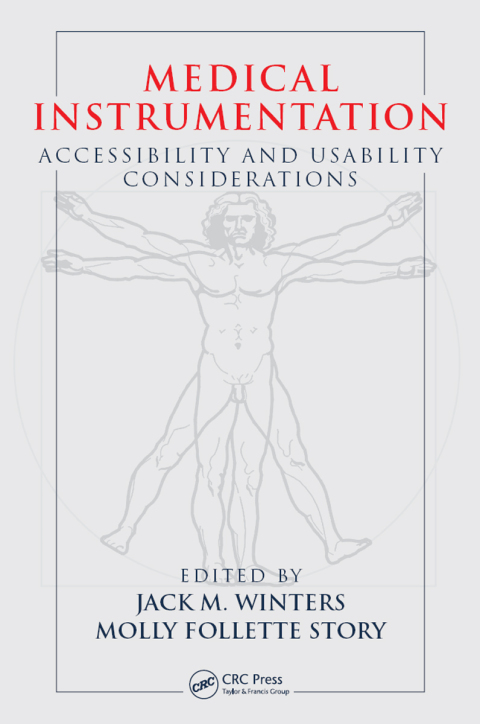Description
Efnisyfirlit
- Cover
- Half Title
- Title Page
- Copyright Page
- Table of Contents
- List of Contributors
- Preface
- Acknowledgments
- PART I Background: The Problem, Existing Infrastructure, and Possible Solutions
- Chapter 1 The Patient’s Perspective on Access to Medical Equipment
- Chapter 2 Results of a National Survey on Accessibility of Medical Instrumentation for Consumers
- Chapter 3 Emerging Human Factors and Ergonomics Issues for Health Care Professionals
- Chapter 4 Toward a New Health Care Policy: Accessible Medical Equipment and Instrumentation
- Chapter 5 Role of Tax Law in the Development and Use of Accessible Medical Instrumentation
- PART II Tools for Usability and Accessibility Analysis
- Chapter 6 Applying the Principles of Universal Design to Medical Devices
- Chapter 7 Using Ethnographic Research to Develop Inclusive Products
- Chapter 8 Educating Engineers in Universal and Accessible Design
- Chapter 9 Assistive Technology Devices and Universal Design Assessments: Theoretical Relationships and Implications on Measurement
- Chapter 10 Tools for Sensor-Based Performance Assessment and Hands-Free Control
- Chapter 11 Ergonomic Evaluation and Design of Handheld Medical Devices
- Chapter 12 Usability Testing by Multimedia Video Task Analysis
- Chapter 13 The Mobile Usability Lab Tool for Accessibility Analysis of Medical Devices: Design Strategy and Use Experiences
- Chapter 14 Comparison of Accessibility Tools for Biomechanical Analysis of Medical Devices: What Experts Think
- PART III Considerations in Design Guideline Development
- Chapter 15 Accessibility Standards and their Application to Medical Device Accessibility
- Chapter 16 Human Factors Standards for Medical Devices Promote Accessibility
- Chapter 17 Designing Accessible Medical Devices
- Chapter 18 Letting User Ability Define Usability
- Chapter 19 Macroergonomic and Implementation Issues of Guidelines for Accessible Medical Devices
- Chapter 20 Reducing Error and Enhancing Access to Home Use of Medical Devices: Designing from the Perspective of the Home Care Provider
- Chapter 21 Use of Problem-Solving Tools of TRIZ to Address Equipment Design for Home Care
- Chapter 22 Development of the Medical Equipment Device Accessibility and Universal Design Information Tool
- Chapter 23 Access to Medical Instrumentation: The Role of Web Accessibility
- PART IV Considerations in Emerging Trends and Technologies
- Chapter 24 Technology for Full Citizenship: Challenges for the Research Community
- Chapter 25 Future Possibilities for Interface Technologies that Enhance Universal Access to Health Care Devices and Services
- Chapter 26 Trends to Watch: Trends in Information and Communications Technology That May Influence Developments in Access to Medical Instrumentation
- Chapter 27 Emerging Personalized Home Rehabilitation: Integrating Service with Interface
- Chapter 28 Progress in Using the Universal Remote Console Standard to Create User-Customized Interfaces for Future Medical Devices
- Chapter 29 Usability and Access Issues in Telerehabilitation
- Chapter 30 Applications and Issues with Wireless Technology in Medical Care
- PART V Outputs of the Workshop: Key Knowledge Gaps, Barriers, Recommendations
- Chapter 31 Report of the Workshop on Accessible Interfaces for Medical Instrumentation: Draft Guidelines and Future Directions
- Appendix 1 Chairs’ Perspectives on Workshop Breakout Theme C: Interfaces for Home Health Care Devices
- Appendix 2 Commentary on Distinguishing Accessibility from Accommodation
- Appendix 3 Commentary on Data, Models, and Procedures for Design of Accessible Medical Instrumentation
- Appendix 4 Commentary on What Is Accessibility? And What Does It Have to Do with Medical Device Design?
- Appendix 5 Commentary on the Difference between “Usability” and “Accessibility,” Which May Be the End Users
- Glossary of Terms
- Index





